1. Fastest Bird: Peregrine Falcon — Top Speed 242 Mph
The peregrine falcon (Falco peregrinus), aka the duck hawk, is the fastest animal in the world. Known as “the living missile,” these falcons live everywhere, except in extreme polar areas and New Zealand, and reach diving speeds of 200 miles per hour. To date, the highest measured descent for a peregrine falcon is 242 miles per hour. When they’re not hunting, peregrines coast along between 40 and 60 miles per hour.
Large keel bones, pointed wings, stiff feathers, and exceptional respiratory systems all contribute to peregrines’ speed. Its big keel bone increases flapping power; the pointed wings create a streamlined airfoil effect; and the animal’s stiff, slim feathers reduce drag. Peregrines also have one-way airflow into their lungs and air sacs that remain inflated even when exhaling, which allows for optimal oxygen distribution. Additionally, the bird’s 600 to 900 beats-per-minute heart rate means they can flap their wings up to four times per second, increasing their power and diminishing fatigue.
In addition to lightning-fast dives, these falcons enjoy the fastest visual processing speed of any animal tested. They can spot prey from over a kilometer away! To put that in perspective: if you show humans a succession of still pictures at 25 frames per second, we’ll see a fluid “film.” For peregrine falcons to experience the same “film” effect, the frame-per-second rate would need to be 129.
The IUCN currently lists peregrine falcons as “Least Concerned.” However, the species wasn’t always in the clear. DDT, the pesticide, almost wiped them out. During the 20th century, the species suffered mass casualties on account of the chemical and was added to the U.S. Endangered Species list. However, thanks to DDT restrictions and other conservation efforts, the falcons were removed from the list in 1999.
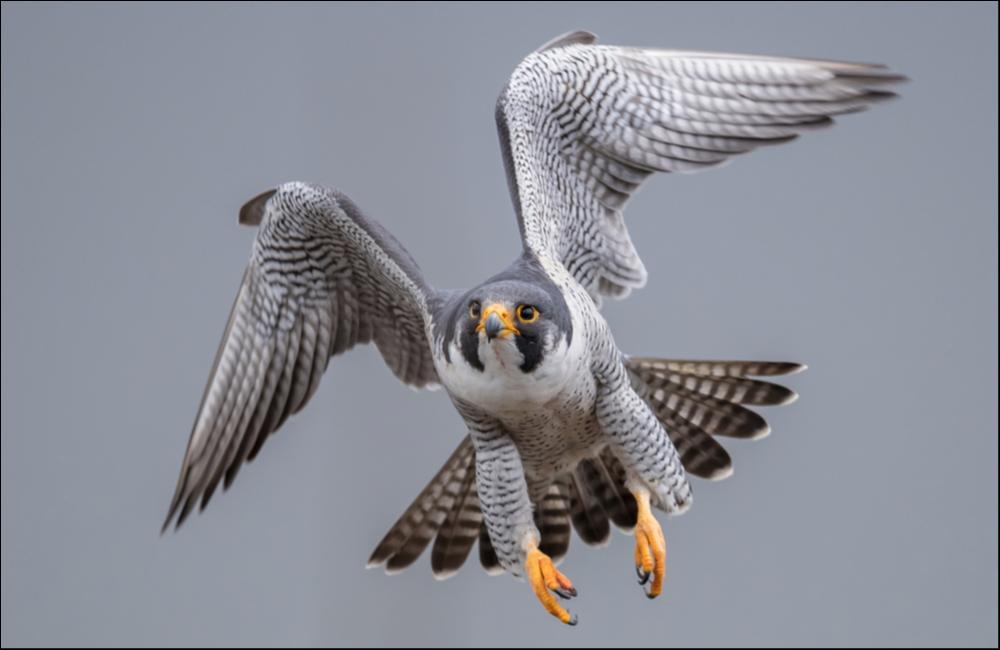
Known as “the living missile,” peregrine falcons can reach diving speeds of 200 miles per hour.
2. Fastest Mammal: Mexican Free-Tailed Bat — Top Speed 99 Mph
A recent and controversial addition to the Fast Animal Hall of Fame is the Mexican free-tailed bat, aka the Brazilian free-tailed bat (Tadarida brasiliensis). Found in North and South America, the Mexican free-tailed bat is the official flying mammal of Texas. They mainly live in caves and sometimes in buildings with outside ceiling access.
In 2009, researchers conducted a Mexican free-tailed speed test by attaching navigation tags to several animals. The scientists then tracked the subjects with an aircraft and recorded one bat whizzing through the air, horizontally, at 99 miles per hour. The results catapulted the Mexican free-tailed bat to the top of the fastest mammals list.
However, not everyone is confident in the outcome. Some people dispute the claim because the test didn’t adjust for wind and ground speeds. Plus, the results allowed for a 50- to 100-meter margin of error.
If the Mexican free-tailed bat loses its speed record, the animal still holds a bat superlative: it can fly higher than any other member of its order, Chiroptera. The winged mammals can cruise along at an altitude of 3,300 meters.
Mexican free-tailed bats are usually about 3.5 inches long and weigh between .25 to .42 ounces.
The IUCN classifies Mexican free-tailed bats as “Least Concerned,” but that doesn’t paint the whole picture. Due to increased habitat destruction, Mexican free-tailed bat numbers are rapidly declining. California lists it as a “species of special concern.”
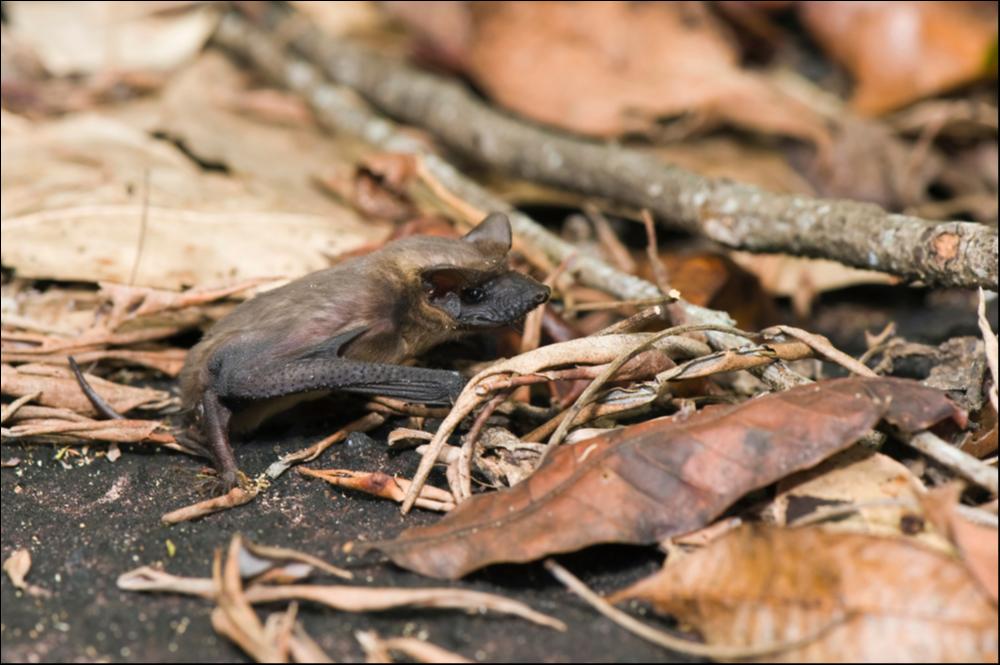
The Mexican free-tailed bat can fly at an altitude of 3,300 meters.
3. Fastest Insect: Male Horsefly — Top Speed 90 Mph
Horseflies (Tabanus sulcifrons), aka gadflies, currently sit atop the fastest insect list. Found worldwide, except in Iceland, Greenland, and Hawaii, horseflies can reach speeds of up to 90 miles per hour — but males are faster than females.
Like the Mexican free-tailed bat, researchers dispute the horsefly‘s speed status. Jerry Butler, a scientist from the University of Florida, produced the 90 miles per hour result. Some folks, however, feel that his methodology allowed for erroneous conclusions. People who reject Butler’s findings usually list the desert locust (Schistocerca gregaria) as the fastest insect, with a reliable miles-per-hour rate of 21.
We should note that scientists have yet to do extensive insect-speed studies. As such, the horsefly’s standing is liable to change.
In the late 19th century, American entomologist Charles Townsend claimed that deer botflies (Cephenemyia stimulator) could reach speeds of 1,287 kilometers per hour. That’s faster than the speed of sound! But after advancements in tracking technology led to better studies, other entomologists burst Townsend’s bubble. They proved that deer botflies only reached speeds of about 25 miles per hour.
Horseflies have a body length between 0.2 and 1.0 inches — about half as long as a golf tee. The largest ones have wingspans of up to 2.4 inches.
Horseflies are so abundant they don’t have an IUCN classification.
Nearly 9 million species populate the planet. Some are fast, some are slow. Some are huge, and some are minuscule. But the one thing we all share is the same planet. So take time to read up on other species — because the more you know, the better planet custodian you’ll be!
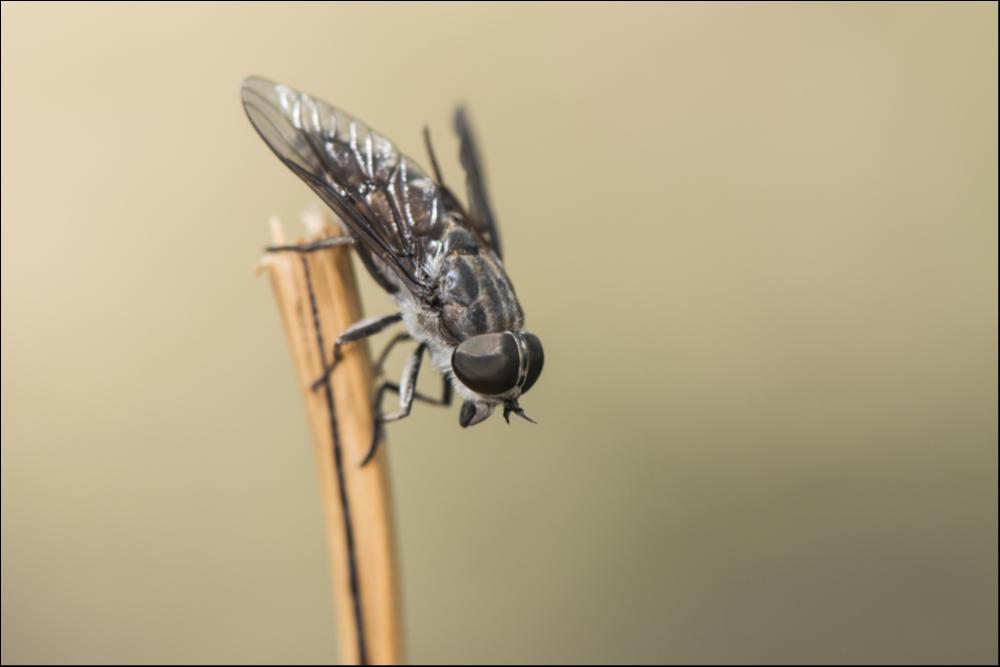
The male horsefly is believed by some to be the world’s fastest insect, reaching speeds of up to 90 miles per hour.
4. Fastest Water Animal: Black Marlin — Top Speed 80 Mph
The fastest fish is the black marlin (Istiompax indica). A resident of the tropical and subtropical regions of the Indian and Pacific Oceans, the speedy fish can clock 80 miles per hour. Comparatively, black marlins swim faster than cheetahs run. To record their speed, researchers measure how quickly a fishing line comes off the reel when anglers snag one.
Several physical features make black marlins fast. Their long, thin, sharp bills — ideally shaped to slice through the water quickly — and rigid pectoral fins are exceptionally aerodynamic. Plus, they can deftly maneuver their crescent-shaped tails to create power.
In addition to swimming fast, black marlins travel far. One animal fitted with a tracking tag in California was caught 10,000 miles away in New Zealand!
Black marlins can also dive to depths of 2,000 feet but typically don’t go below 600 — and the longest ever recorded was 15.3 feet.
According to the IUCN, black marlins are “Data Deficient,” meaning there’s insufficient information to adequately assess the species’ conservation status. Regardless, they’re commercially fished and sought as prized game.
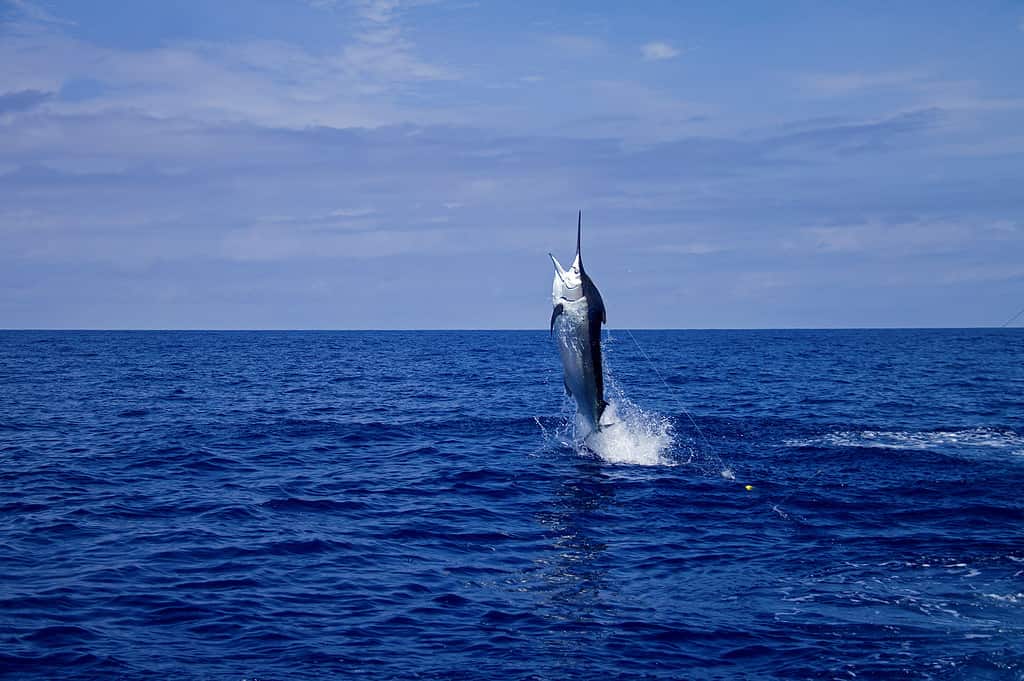
Black marlins live in the tropical and subtropical regions of the Indian and Pacific Oceans.
5. Fastest Land Animal: Cheetah — Top Speed 70 Mph
Found in North, Southern, and East Africa, the cheetah (Acinonyx jubatus) holds the title of the fastest land animal. A natural-born sprinter, cheetahs can reach a top running speed of 70 miles per hour. More impressively, the feline can accelerate from 0 to 60 miles per hour in just three short seconds! That’s better than a sports car!
Several physiological factors make cheetahs speed demons. For starters, they’re the slimmest of the big cats, sport long legs, and have small, lightweight heads. These factors make cheetahs aerodynamic dynamos. Also, when cheetahs run, they don’t move their heads, which adds to their aerodynamism.
Cheetahs’ spines, however, are the linchpin to the animal’s speed. They’re long, extraordinarily flexible, and act as a spring coil that allows the animal to maximize every stride. Lastly, cheetah muscles have a high percentage of what mammalogists call “fast-twitch fibers,” which augment their power and speed.
Cheetahs, however, cannot sustain high speeds for long. They’re sprinters, not marathon runners. It can take 30 minutes for a cheetah to recover from a 330-foot burst, which is about the length of a soccer field.
The largest cheetahs grow to 136 centimeters (53 inches) tall, 149 centimeters (4.9 feet) long, and they weigh between 21 and 72 kilograms (46 and 159 pounds).
Currently, the IUCN lists cheetahs as “vulnerable.” Due to heavy poaching, game hunting, and habitat destruction in the 20th century, the cheetah population has dwindled to about 7,100. Additionally, cheetahs are often exploited on the illegal pet trade market, and climate change is proving devastating to the species.
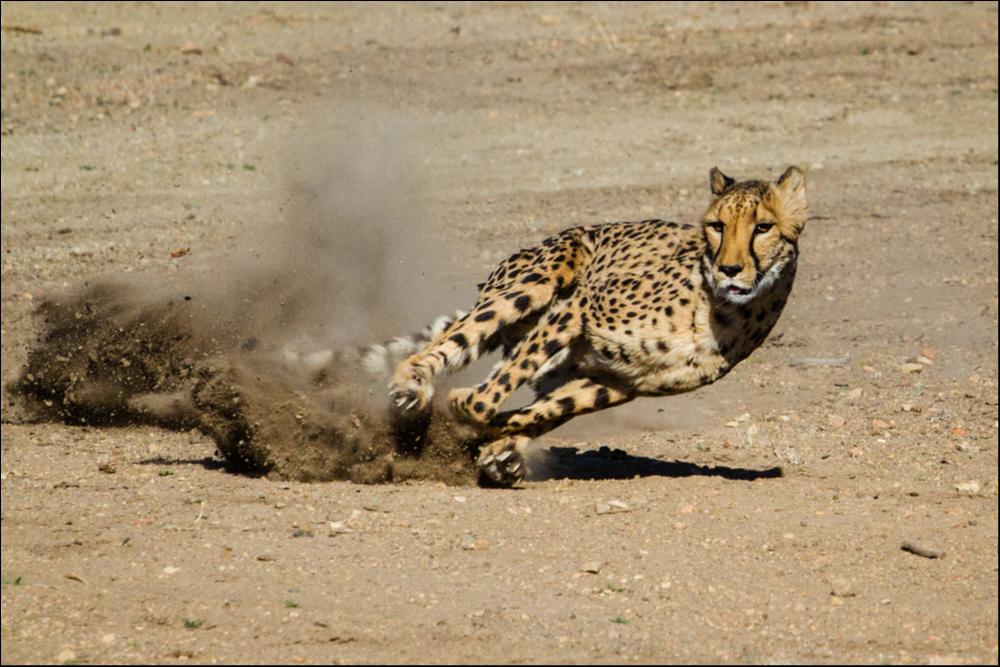
Cheetahs can accelerate from 0 to 60 miles per hour in just three short seconds.
6. Fastest Land Animal (Long-Distance): American Antelope — Top Speed 55 Mph
You must be wondering as to how this land animal made the list when the cheetah is clearly faster. Well, a cheetah may run fast while hunting a prey, however, how long can it keep up the speed and still be the fastest? The answer is not long. While the cheetah may be the fastest animal in the world to cover a short distance on land, the American antelope, also known as the pronghorn, can maintain speed for a longer period of time.
The American antelope, native to North America and the only surviving member of Antilocapridae family, is well known for being the only species that sheds its branching horns annually. These animals are quite well known for the white patches on their rump that make them easy to spot. They grow up to 4.5 feet in length, 3 feet in height and between 90 and 150 pounds in weight. They also have very large eyes and a very clear vision that helps them spot predators. Pronghorns can leap up to 20 feet while running at a bound.
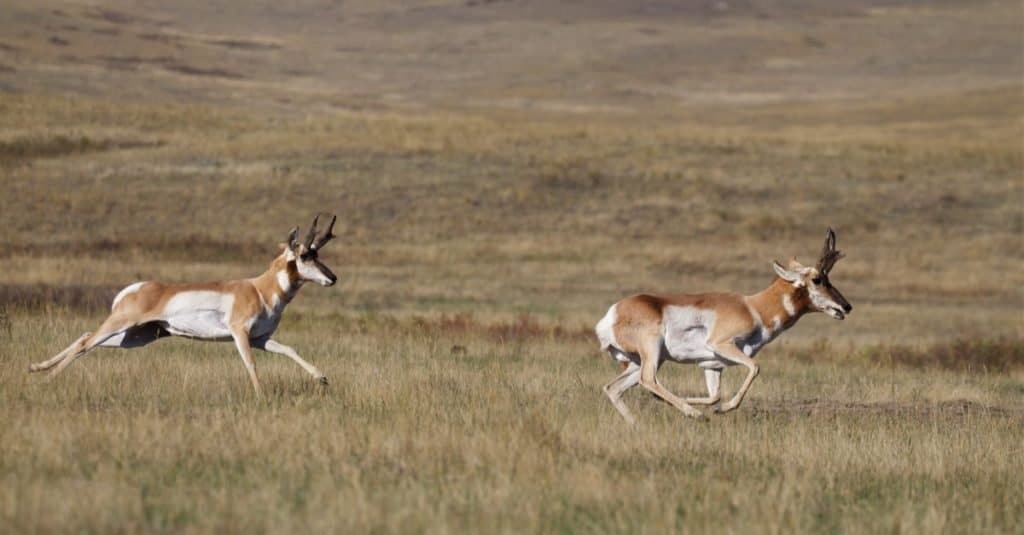
American antelope, also known as pronghorns, can maintain speeds for a longer period of time than cheetahs.
7. Fastest Snake: Sidewinder Snake — Top Speed 18 mph
If you were wondering what the fastest snake in the world might be, it’s the sidewinder snake, clocking in at a max speed of 18 mph. The reason they move faster than any other snake is because of their unique movement. They use their bodies to create ridges in sand, and then their bodies push against them. This motion results in their incredible speed. The ability also lies in the sidewinder’s scales, which have a rough, sturdy texture. This adaptation helps the snake to move through the hot sand of its desert habitat.

Sidewinders move faster than any other snake due to their unique sidewinding movement.




